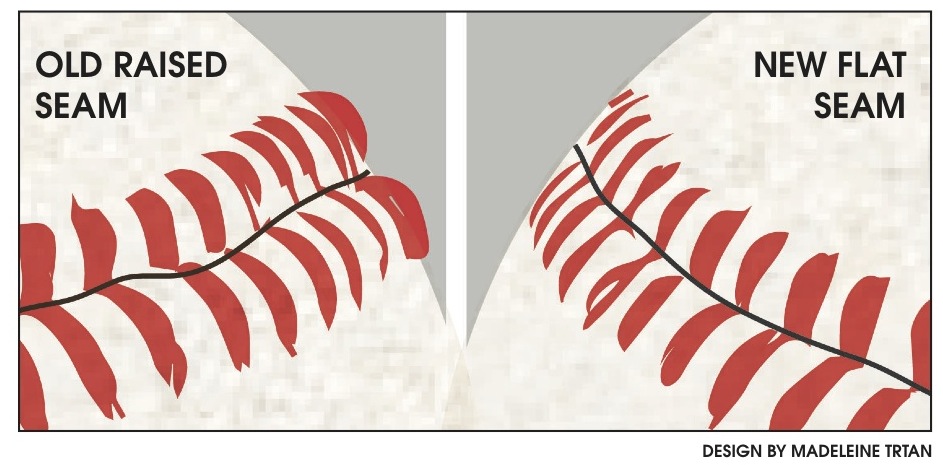
As the University of Miami Hurricanes baseball team faced Rutgers University on Friday night in the season debut for both teams, a new type of baseball got its first action of the season. The ball, which is unchanged in structure and composition but has a flatter seam, took just an inning before it made an impact on the game.
Rutgers first baseman Joe D’Annunzio drove a pitch to right field and the ball just snuck over the glove of UM Right Fielder Willie Abreu, clearing the wall by a matter of inches. The lowered seams were expected to increase power, and D’Annunzio’s first career homerun in his 124th career game provided evidence of the new ball’s impact.
“The ball is going like 20, 30 feet further which makes a difference because a warning track ball is now a homerun,” said UM Head Coach Jim Morris at the team’s media day on Tuesday. “And that’s good, you know, it got to the point where you couldn’t hit one out.”
When the NCAA implemented new regulations for the bats used by Division 1 teams in 2011, the goal was to protect fielders and pitchers especially from being struck by balls off the bat. The regulations brought about a major side effect; power in college baseball dropped drastically.
For the University of Miami Hurricanes, that meant going from 106 homeruns as a team in 2011, to an average of just 28 homeruns the next three seasons. Researchers at Washington State University’s Sports Science Laboratory had been looking into the impact of lowering the seams since a coach suggested the change about 2 years ago. Lab Director Dr. Lloyd Smith said a coach brought up the idea of lowering the seams to be more like professional baseballs two years ago, when most people didn’t even know their was such a difference in seam heights at the different levels.
“The thinking was that if you were to flatten the seam then the ball would have less drag and it would go out a little further,” Dr. Smith said. “This was appealing to the NCAA because by only working with the seam height, the speed of the ball hit off the bat wouldn’t change. So, if you were concerned about players having time to react to the ball, changing the seam height wouldn’t affect them, but then it would allow the ball to go a little further.”
The laboratory did the research for the NCAA on the regulations for bats that went into place in 2011, and the NCAA was pleased with the effect those regulations had. According to Dr. Smith, the lowered seams will only affect how far the ball will carry on long fly balls. He said it’s about a 15-20 foot difference, and the difference becomes noticeable the farther the ball is hit. Line drives off of the bat won’t be noticeably effected.
“The difference (in seam height) is amazingly small; it’s only about 5 thousandths of an inch,” Dr. Smith said. “It’s pretty amazing that your finger and eye are that sensitive that you can feel that small of a difference in how height the seam is, and for that small a difference in the seam height, that it has a measurable affect on how for the ball goes.”
UM Associate Head Coach Gino DiMare thinks college baseball needed the change to bring more excitement back into the game.
“I think they went a little overboard in changing the bats and it took away a lot of the runs, and I think the (College) World Series showed that, especially to the rest of the country that maybe doesn’t watch college baseball as much,” said DiMare. “People are tired of watching 1-0 and 2-1 games…they wanted to get a little more runs in the game, a little more excitement.”
As for the pitchers, Dr. Smith said they had some coaches use the new balls with their pitchers during their research and didn’t get any complaints. UM Pitching Coach J.D. Arteaga said that, to his surprise, there wasn’t a major difference for his pitchers when they threw off-speed pitches, which can be affected by seam height.
“Keep the ball down, less fly balls more ground balls,” Arteaga said when asked whether the new balls would affect their approach. “You know, we’re not going to change our philosophy. We’re still going to pitch to contact and pitch inside. And try to force the issue to make the hitters put the ball into play as early as possible in at-bats.”
For a team that ranked 95th in the nation in home runs with just 25th, and lost its second best producer, Dale Carey, in the category to the MLB draft, the new baseball should help reconcile their power problems.
“This year we hit more out in one day of practice than we did all of last year,” Morris said.





